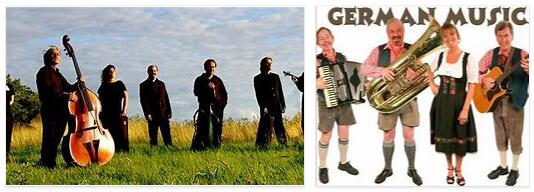
Classic Music in Germany
Around 1725, a radical change emerged in European music, which composers in Germany only understood, hardly helped to shape. In the face of a new, bourgeois public, musical creation stepped out of its functional ties: comprehensibility through orientation to song and dance, sensuality through melodic beauty, imaginative expressivity and compositional originality became hallmarks of the pre-classical period, which became a specifically German one through the melting of Italian and French influences Embossed received. Representative here are the works of Bach’s sons W. F. Bach and C. P. E. Bach, who worked at the court of Frederick the Great in Berlin. Approaches to a new sense of music were also evident in his Berlin colleagues J. J. Quantz, C. H. Graun and F. Benda, whose works led from the rigor of the baroque style to gallant and expressive sensitivity. Even more decisive were the suggestions emanating from the Mannheim School since the mid-1740s: the symphonies composed by J. Stamitz, F. X. Richter and I. Holzbauer with their sparkling orchestral effects, such as that of dynamic swelling, aroused even in centers like Paris and London stir.
The Italians and the French continued to be decisive, especially in opera, the genre that was representative in musical life as well as in aesthetic discourse. As J. A. Hasse et al. went C. W. Gluck from the Italian opera tradition, but later came to a French-classical attitude. Gluck demanded a “true” poetic-musical statement that was adequate to the meaning, combined with a cleansing of virtuoso accessories, and with this approach and his renewed recourse to antiquity, he still influenced R. Wagner.
How little independent music was already available in Germany is shown by the discussion about the foundation of a musical theater that was independent of Italian and French models and that only found itself in connection with drama. A. Schweitzer (“Alceste”, text by C. M. Wieland, 1773) and I. Holzbauer stand for a prime of the German Singspiel, which combined songs and arias with spoken text. A specifically German contribution with regard to a new stage genre was themelodrama (“Ariadne auf Naxos” and “Medea” by G. A. Benda), which, with its combination of expressive instrumental music and spoken language, also preoccupied the aesthetic discussion.
Viennese Classicism
The style period of the Viennese Classic, which includes the music of J. Haydn, W. A. Mozart and for the most part also L. van Beethoven, is characterized by the development and completion of the new genres of instrumental music, the symphony, the string quartet and the piano sonata. With his more than 100 symphonies and his 68 string quartets, Haydn laid the foundation for the well-worked classical instrumental style, especially the sonata form which is based on the processing (implementation) of the two (opposing) topics presented in the exposition. He also wrote music history with the oratorios “The Creation” and “The Seasons”. Mozart, who was trained in Italy and initially shaped by the Italian idiom that was prevalent throughout Europe, picked up on this, enlivening and inspiring the style and expanding the genres of instrumental music (piano, violin concertos, etc.). In addition, his work marks a high point in the history of opera, v. a. with his German Singspiele (“Die Entführung aus dem Serail”, “Die Zauberflöte”) and the Opere buffe based on texts by Lorenzo Da Ponte (“Le nozze di Figaro”, “Don Giovanni”, “Così fan tutte”).
Beethoven, whose opera “ Fidelio ” is carried just as much by the pathos of the French Revolution as the emphasis of his symphonies as an art directed at all of humanity, achieved a new, groundbreaking compositional intensity with his symphonies, concerts and overtures, string quartets, piano and violin sonatas Thought and musical expression, which remained the constant model for the 19th century. In the church music of the Viennese classical music the type of orchestral mass is predominant, in which the achievements in the field of the symphonic are combined with the repertoire of forms from the opera. Beethoven’s » Missa solemnis «Goes beyond the liturgical framework and, in terms of claims and content, already foreshadows art-religious tendencies that only fully developed in Romanticism.
Schubert stood apart from the Viennese aristocratic music world. His work is based on the classical world of forms, but opens a glimpse into the early romanticism, v. a. in the piano-accompanied solo song: his first Goethe song “Gretchen am Spinnrade” (1814) became the epitome of a genre which, following the Berlin School of the 18th century (J. F. Reichardt, C. F. Zelter et al.), was also so important for the culture of neighboring countries became that the German generic name “Lied” was adopted as a loan word. His symphonies and string quartets (“Death and the Maiden”) are also on the threshold of Romanticism.